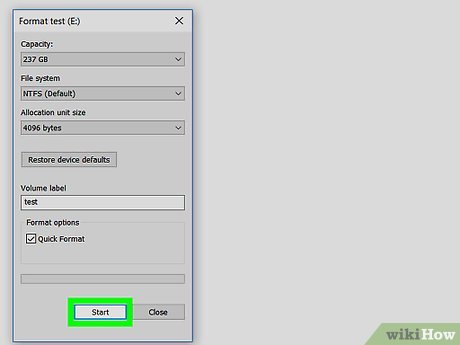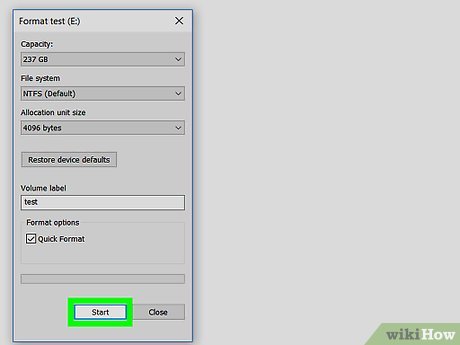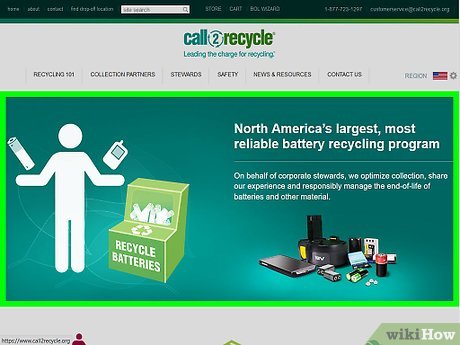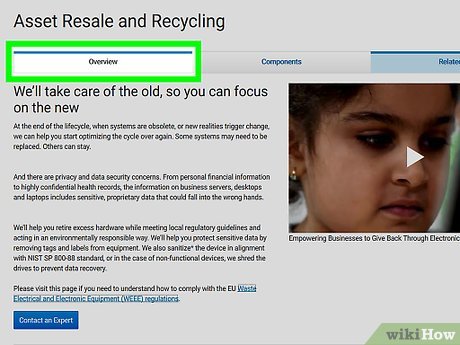How to Dispose of Electronics
Method 1 of 2:
Donating Unwanted Electronics
-
 Determine whether your electronics are in good condition to donate. If your electronics are still functioning and less than 5 years old, they're good to donate. Check that they don't need any major repairs or replacement of parts, either. Most nonprofits won't be able to afford those fixes.[1]
Determine whether your electronics are in good condition to donate. If your electronics are still functioning and less than 5 years old, they're good to donate. Check that they don't need any major repairs or replacement of parts, either. Most nonprofits won't be able to afford those fixes.[1]- If your electronics don't meet those conditions, recycle them instead.
-
 Destroy all data on an electronic device before you donate it. If there's any content on your device that you want to keep, back it up on another device or external hard drive first. Make sure your data is encrypted (iPhones do this automatically but for Androids, you may have to do it manually in your Settings menu). Then restore the electronic device to its original factory settings through a factory reset.[2]
Destroy all data on an electronic device before you donate it. If there's any content on your device that you want to keep, back it up on another device or external hard drive first. Make sure your data is encrypted (iPhones do this automatically but for Androids, you may have to do it manually in your Settings menu). Then restore the electronic device to its original factory settings through a factory reset.[2]- To do a factory reset on your phone or tablet, go into your settings menu. On iPhones or iPads, tap 'General' and then 'Reset.' On Androids, tap 'Security' followed by 'Security Wipe' (for a Blackberry) or 'About' followed by 'Reset' (for Windows phones).[3]
- Removing the SIM or SD card is another step to take against identity theft. Sometimes it will still contain data after a factory reset so take it out of the device and destroy it.
-
 Take the device to a school, senior center, or community center. Many local schools or centers that don't require a lot of bandwidth or advanced technology accept used electronics. They'll use the devices for students who may not have access to them at home or for elderly people learning how to use technology. Call ahead to find out what types of electronic devices they're looking for and how to donate them.[4]
Take the device to a school, senior center, or community center. Many local schools or centers that don't require a lot of bandwidth or advanced technology accept used electronics. They'll use the devices for students who may not have access to them at home or for elderly people learning how to use technology. Call ahead to find out what types of electronic devices they're looking for and how to donate them.[4]- The National Cristina Foundation works to connect people looking to donate used electronics with schools that are in need. Their website lets you search for schools near you.[5]
-
 Donate the electronic device to a nonprofit organization. Always ask the organization beforehand what types of electronics they take and in what condition. To find an organization, visit the Electronics Industry Alliance's website where they provide a list of all the organizations across the country that accept electronics donations.[6]
Donate the electronic device to a nonprofit organization. Always ask the organization beforehand what types of electronics they take and in what condition. To find an organization, visit the Electronics Industry Alliance's website where they provide a list of all the organizations across the country that accept electronics donations.[6]- There are nonprofits geared towards specific devices. For example, Computers with Causes collects computers and computer accessories whereas Secure the Call collects cell phones.[7]
- Ask for a receipt so you can deduct the donation from your tax returns at the end of the year.[8]
Method 2 of 2:
Recycling Electronic Devices
-
 Wipe all personal data on the device prior to recycling it. If you're recycling a computer or laptop, do a secure wipe or reset which are both often found in the Settings or Start menu. For phones, tablets, and gaming consoles, do a factory reset which is found in your Settings menu.[9]
Wipe all personal data on the device prior to recycling it. If you're recycling a computer or laptop, do a secure wipe or reset which are both often found in the Settings or Start menu. For phones, tablets, and gaming consoles, do a factory reset which is found in your Settings menu.[9]- Simply erasing data from electronics is not enough. Identity thieves have access to data recovery programs that restore erased information.[10]
- Download software that's cheap (and sometimes even free) that will wipe your device for you.
- Check with your recycling center to find out if they provide data destruction services. Many do it for you so you don't have to do it yourself.
-
 Remove the batteries from the device to recycle them separately. Find out where to take your old batteries by contacting your community's recycling service or going to a nearby household hazardous waste collection facility. Call2Recycle, a national program that lets you recycle household batteries for free, also lists battery recycling sites in every state on its website.[11]
Remove the batteries from the device to recycle them separately. Find out where to take your old batteries by contacting your community's recycling service or going to a nearby household hazardous waste collection facility. Call2Recycle, a national program that lets you recycle household batteries for free, also lists battery recycling sites in every state on its website.[11] -
 Take your electronics to a collection site or recycling center in your area. Contact your local waste management service or public works department for a list of spots to recycle your electronics. Ask what electronics they do (and do not) accept before going. The National Center for Electronics Recycling also has a database of electronics recyclers around the country that's free to search.[12]
Take your electronics to a collection site or recycling center in your area. Contact your local waste management service or public works department for a list of spots to recycle your electronics. Ask what electronics they do (and do not) accept before going. The National Center for Electronics Recycling also has a database of electronics recyclers around the country that's free to search.[12]- You may have to pay a small fee for recycling your electronics. For example, in California, the fee for recycling TVs is $5 to $7.[13]
- Some cities and states offer special collection events, curbside collection, or e-cycling programs.[14]
-
 Ask the manufacturer if they offer any take-back programs. Contact the brand (Apple, Sprint, Dell, etc.) directly and find out what services they have for recycling old electronics. Ask about the details for shipping and whether they provide free postage or containers for mailing back your device. Many manufacturers also give discounts or perks for recycling your device through them.[15]
Ask the manufacturer if they offer any take-back programs. Contact the brand (Apple, Sprint, Dell, etc.) directly and find out what services they have for recycling old electronics. Ask about the details for shipping and whether they provide free postage or containers for mailing back your device. Many manufacturers also give discounts or perks for recycling your device through them.[15]- Ask the electronics stores (like Best Buy or RadioShack) in your area if they have an electronics recycling program. They also may be able to help you ship an electronic device back to the manufacturer.
- Some states, like New York, have laws that require electronics manufacturers to take back their products for free for recycling.[16]
5 ★ | 1 Vote
You should read it
- How to Sell Electronics on Amazon
- 8 security issues to keep in mind when recycling hardware
- How are old electric car batteries recycled?
- Chemical recycling can be a solution to the problem of plastic waste pollution
- Examine the process of turning garbage into street bricks and clothes in Japan
- Recycling electronic trash into 28,000 Windows install discs, this guy is in danger of being jailed








 How to Speed Up Acer Aspire One
How to Speed Up Acer Aspire One How to Find Amps
How to Find Amps How to Open an Opus File on PC or Mac
How to Open an Opus File on PC or Mac How to Clean a Lifeproof Case
How to Clean a Lifeproof Case How to Save Videos on Telegram on PC or Mac
How to Save Videos on Telegram on PC or Mac How to Clear a Flash Drive on PC or Mac
How to Clear a Flash Drive on PC or Mac